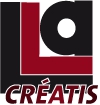-
Partager cette page
Programme Quantum aesthetics
Programme aims
For over five years this programme established by the Hispanists of LLA-CRÉATIS (Monique Martinez and Agnès Surbezy) has investigated artistic and literary productions described as “quantum” either by their creators or by critics.
The programme has been defined as follows:
Quantum physics challenges the principles of classical physics, emphasising discontinuity over continuity, chance over causality, the interdependence of atoms over separability and objectivity, the virtual over the actual and probability over certainty. In so doing it has profoundly altered both our perception of everyday phenomena and the major currents of contemporary thinking and has provided fertile ground for the development of the great theories of the 20th century, notably “post-modernism”.
Arising out of the intersection of the arts and sciences, a “quantum” approach to aesthetic issues can offer a better understanding of some aspects of contemporary artistic creation, whether using new technologies (creation using a network, digital text and images, virtual worlds on the internet, devices of different kinds etc.), or exploring more classic forms (novel, painting, film, etc.), in both cases taking account of the major upheavals imposed by a quantum vision of the universe. While quantum aesthetics involves all fields of creation and all national territories, which will be subject to different studies in themselves, the application of the term “quantum aesthetics” is a Spanish phenomenon, which will also be subject to specific consideration: “quantum” is the key notion of the Salón de Independientes, an international association founded in Granada in 1994, which defines quantum aesthetics as an artistic exploration of the real based on the broad principles of subatomic physics.
This theoretical current seeks to explore whether models of quantum artistic creation can be developed beyond the simple analogies that quantum theory allows, and also to consider the pertinence of the new models of representation and figuration to which quantum theory has given rise and which are constantly challenged by developments in our understanding of the infinitely small and infinitely large.
The two most recently published articles, written with the quantum physicist Michel Caffarel, analyse the phenomenon of labelling in the light of the fertile interaction between the arts and sciences, which goes beyond simple analogy. Such is the conclusion of the article “Initiatory journey into the world of quantum aesthetics”, published in the journal Mozaicul, (Krakow 2012): “Physicists are perplexed by the need to apply the quantum label to ‘restore to art the grandeur, possibilities and mystery it had lost’. This grandeur and mystery still exist, lurking in the folds of our visions of the world and our boldest artistic and scientific constructions. So let us be vigilant. Just as scientists should avoid judging artistic creation against scientific procedures, so artists must take care not to quantify and formalise their own intuitions using the technical tools of science. If there is to be a fertile meeting between the two, it can take place only on the common ground of the imagination, in its artistic and scientific manifestations, rather than that of the technical approaches proper to each field. Each of these two worlds can then much benefit from the intuitions, concepts and images of the other.”
Numerous events have been organised in this context:
- A regular seminar (two annual sessions)
- Two study days
- An international conference
- A publication: Théâtre quantique (2013), A. Surbézy (ed.). Éditions Lansman.
- Participation in international conferences to publicise the progress made by the programme and the importance of this theoretical approach.
- Doctorates and Master’s exploring different aspects of quantum creativity (superimposition of times and spaces, questions of the mind raised by virtual worlds, quantum theory and the theory of mechanisms).
Bibliography:
Monique Martinez and Michel Caffarel “L’esthétique quantique: un regard croisé Arts et Sciences”, in Science, Fables and Chimera: Strange Encounters, edited by Laurence Roussillon-Constanty and Philippe Murillo, Cambridge, Cambridge Scholars Publishing, 2012.
Monique Martinez and Michel Caffarel, “Quantum aesthetics: when quantum theory stimulates the artistic and scientific imagination: a critical assessment”, in Initiatory journey into the world of quantum aesthetics, Mozaicul, Krakow, Aius Publishing House, 2012.
Monique Martinez, “Sangre lunar: transgresión de las normas, transgresión de las formas”, in Teatro y Sociedad en la España actual, Wilfried Floeck and Maria Francisca Vilches de Frutos (ed.), Frankfurt/Madrid, Vervuert, 2005.
Monique Martinez, José Sanchis Sinisterra, une dramaturgie des frontières, Rennes, PUR, 2005.
Monique Martinez and Agnès Surbezy, "Le traitement quantique du thème de la mère empêchée", in Mekouar, Nadia (ed.) Nouvelles figures maternelles dans la littéraire espagnole contemporaine, Les mères empêchées, Paris, L’Harmattan, 2009, p. 137-154.
Monique Martinez and Agnès Surbezy , “El tratamiento cuántico en la historia en la dramaturgia femenina actual” in Dramaturgias femeninas en la segunda mitad del siglo XX : entre pasado y presente, Wilfried Floeck, Herbert Fritz, Ana García Martínez (ed.), Giëssen, 2008, pp. 315-328.
Monique Martinez, Fabrice Corrons and Agnès Surbezy “Le théâtre quantique: ordre et désordre dans l’Espagne postmoderne” in Désordre et ordonnancements, L’Annuaire théâtral 43-44, Revue québécoise d’études théâtrales, Ottawa, 2009, pp. 59-76.
Arnaud Rykner, “L’univers quantique de Marguerite Duras et la critique des dispositifs”, in Marguerite Duras et la pensée contemporaine, Eva Ahlstedt and Catherine Bouthors-Paillart (ed.), Romanica Gothoburgensia, Göteborg Universitet, 2008, p. 181-193.


